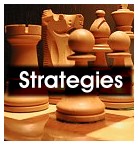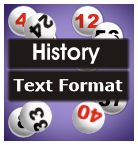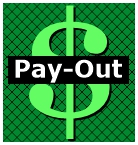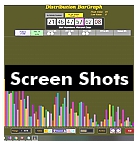Software designed exclusively for the US Powerball lottery
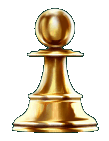


© Copyright Randomware LLC
Powerball Winning Strategies - 60 Day Free Trial
The big winners in Las Vegas are seldom those who walk through the casino doors with nothing but hope and a dream. Generally speaking, they have a plan. They know how to get what they came for because they have trained for it. They have honed their craft. Successfully predicting the US Powerball lottery numbers is as much a craft as any other skill. In fact, due to the sheer number of possibilities, it can be considered more of a science.
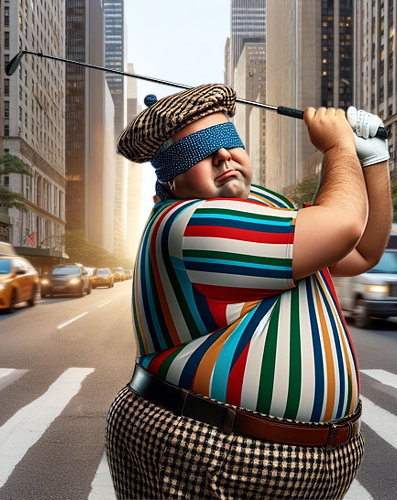
Even if you're not a golfer, consider for a moment attempting to play the game blindfolded. With a little luck, you
might actually make contact with the ball. There is also a remote possibility that you could hit the ball into the cup
on the 1st green, although the odds would be enormously stacked against you. The more likely scenario would be that
after hacking your way aimlessly through the golf course, you could easily wind up miles from the golf course,
swinging your golf club enthusiastically at pedestrians and passing motorists.
Now consider a similar golf outing, only this time you have a partner who is not blindfolded. Your partner could hand
you the appropriate club and help you line up with the ball. After pointing you in the right direction and telling you
how hard to swing the club, you actually have some realistic odds.
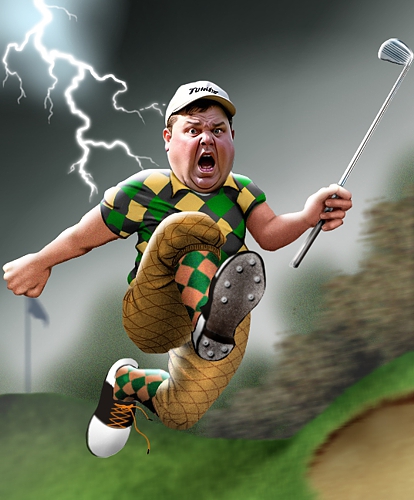
We all could benefit from a bit of both luck and intelligence on a routine basis, although for most of us, luck is
frequently elusive. It seems that we just can't count on it for any particular occasion. When we are lucky... it
just happens. Some of us believe it is a gift from fate. Others may attribute luck to the alignment of the planets
and stars, or even karma. Whatever the perceived source of our luck or lack of it, it's slippery nature keeps it
from our grasp. We just can't summon it up when we need it. Playing the lottery blindly, by picking numbers that are
personally meaningful, such as birthdays and lucky numbers or by using "Quick Picks", you are literally facing
similar odds as the unaided blindfolded golfer. With odds of winning big at the Powerball lottery at nearly 300
million to 1, you have a better chance of being struck by lightning. If you're going to leave it to luck entirely,
you can accurately call it "Dumb Luck".
Working and playing smarter however benefits anybody, anytime without invoking any mystery.

Playing the lottery "Smarter" means paying attention to what's going on. That may be easier said than done. Few people can mentally juggle the large amount of data needed to help them zero in on a select handful of numbers to include in their Pick Numbers. Computers, however, are well suited for such a task and can comb through reams of data in a flash. PawnPower's Lottery Analysis Assistant is a software program that has been designed from the ground - up for use with the US Powerball lottery. By analyzing years of past drawings, and tracking current trends, this tool will help you make intelligent decisions when determining which numbers to include in your Picks. By being your eyes and ears into the data that is virtually invisible to even the most astute player, PawnPower can be the game partner you've needed all along to point you in the right direction and give you some realistic odds.
The ultimate assistant for analyzing the Powerball Lottery
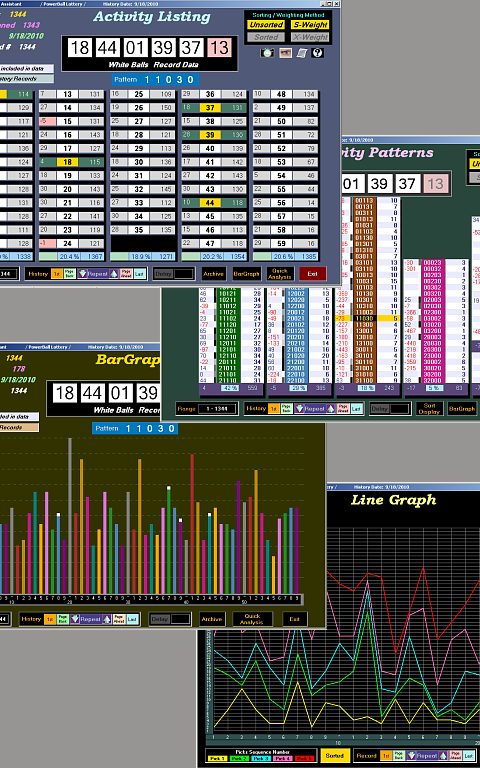
The Automated selection process allows you to harness the speed and processing power of your computer to handle large arrays
of numbers and boil them down to a list of suggested Picks. This Powerball numbers generator can be run in "Fully Automated"
mode for those who want their computer to handle every aspect of the Pick numbers selection, or "Semi-Automated" modes for
those who want some control over the Automated process. Either way, you don't need a background in mathematics or
statistics to utilize the advantage this program offers.
Used manually, this application lays out the drawings data in large, easy to read and easy to understand charts and
graphs that can be put into motion so you can watch the drawings data evolve over time. You don't need to pore over
long lists of small type and irrelevant data. Analysis tools can be customized so you can test your theories and
create new strategies for finding the best Picks for upcoming drawings. The context sensitive and animated HELP
feature insures that every module is intuitive to every user.
With an inkjet or a laser printer, you can print your Picks directly on your state's play slip and put an end to that mind
numbing task of filling out those forms by hand. Checking your pick numbers for winners is a quick and easy process as your
computer sorts through your picks and clearly displays your winnings.
Common Sense Powerball Winning Strategies
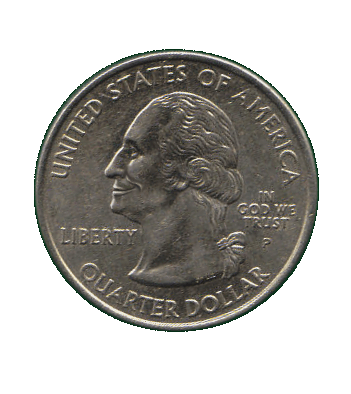
Are your Pick Numbers the same sequence of numbers that have come up as winners in the past? If you don't know, they very well could be. It's highly improbable that a complete duplicate sequence of numbers will be drawn again in the lottery drawings. 'Not impossible, but extremely unlikely. It would be much wiser to spend that money on something else. PawnPower checks every Pick sequence to make sure that your Picks are not a duplicate set of numbers from earlier drawings.
Consider that the odds of a flipped coin coming up heads are 50%. The two sides of the coin have an equal chance of coming up. What are the odds that the next flip will come up heads also? Many argue correctly that the odds are still 50% as the coin has two sides and the previous flip has no bearing on the next flip. OK; let's now say that after ten flips, the coin has come up heads every time. Are the odds still 50% at this point? Even a little common sense tells us that we should either be looking for tails or checking that the coin does not actually have heads on both sides. Similar logic tells us that ball numbers that have not come up as winners within a given number of drawings have an increasingly greater chance of being drawn as time goes on. Statistics can be misleading when common sense is excluded from the equation.
Use the 'Hot / Cold' strategy sparingly

Here's an axiom that has something to do with just about everything in the universe. It's called "entropy". This is
a basic scientific principle that describes how ordered systems naturally evolve to become disordered. In other words,
things tend to want to become messy all on their own. In a junk yard, and unfortunately sometimes in a neighbor's
yard, we can witness a rusted automobile dissolving back into the earth as it's rusted parts fall off and combine with
minerals in the soil. It's a one way trip from the finished car to the soil. No matter how long we wait, we will never
see a car spontaneously assemble itself from the iron and other minerals in the soil. This is entropy at work.
This applies to our random number drawings as well. We will not see just a few of the possible ball numbers get all of
the action. That would represent a form of order. There will be times when a handful of numbers has been drawn more than
the others, but that will change with time.
A simple classroom experiment illustrates this concept nicely. We'll start
with two bottles connected by a small tube at the base of each bottle. One bottle will be filled with a blue colored
water solution and the other with yellow water. Over time, the RANDOM motions of the water molecules will cause
the two fluids to mix and create a green hue at the base of each bottle. Left undisturbed, the two bottles will
eventually reach an equilibrium and both bottles will appear completely and equally green as entropy has converted the
order within the system of two separate, pure colors into a chaotic stew. At this point there is no chance that the two
colored dyes will magically accumulate back into their original containers and return the bottles' contents to the blue
& yellow colors.
Applying this principle to the lottery drawings, which is also a RANDOM process, means that in the long run,
we should see the winning ball numbers
spread relatively evenly across the spectrum just as the two bottles have a relatively even distribution of the colored
dyes. This means that ball numbers that have not been drawn as often as others have a modestly greater chance of being
the next winners. PawnPower allows you to adjust your view of the data from short term to long term and all ranges in
between to help you determine which numbers have had the least activity at different points in the history. It over
simplifies the task of determining which numbers are most likely to come up next by saying that our success will be based
soley on these 'Hot' or 'Cold' ball numbers, but it is a factor that we must consider. Several other features become
apparent as you study the previous winning numbers.
A more accurate predictor for the next winning numbers combines how often a ball number has been drawn with how
RECENTLY it has been drawn. PawnPower uses a value called an "Activity Counter" that it associates with each
ball number. The Activity Counter makes it easy to track how recently a ball number has been drawn and how it compares
with the other possible ball numbers. A "Distribution Patterns" module compounds the advantages by clearly showing which
COMBINATIONS of the ball numbers' activity have been winners throughout the course of the Powerball history.
Activity Patterns provide an overwhelming advantage in selecting winning Powerball numbers
A unique "Activity Patterns" feature is incorporated through out this software package. Using the Activity Patterns
module makes child's play out of determining which types of Pick Number combinations are winners and which are losers.
Right from the start, you can rule out nearly 60% of the possible Pick Number combinations as those that essentially
never win. That alone more than doubles your odds of picking a winner before you've even started to narrow down the
possibilities.
An interactive LineGraph reveals a surprising advantage. Did you know that the winning ball numbers cycle between up
& down on a Line Graph within 2 drawings 88% of the time? Also, they will change direction 62% of the time within
a single drawing. This means that any Pick sequence number is more likely to reverse direction between higher and lower
values than to continue it's current path... 'A terrific aid in roughing out where the next winners will come from.
This is just one of many that provide genuine advantages when you have the right tools for the job.
With a little analysis, the Powerball drawings previous history is a valuable resource for determining the next most
likely ball numbers to come up soon. As is often true in life, being aware of what has happened in the past is a good
first step to making qualified prediction about what is likely to happen in the future. But we are not limited to the
data from the drawings history. The entire collection of winning numbers is really nothing more than a collection of
random numbers. Putting together a collection of random numbers is one of many tasks our computers can easily perform
for us. So, in theory, we could analyze any set of randomly generated numbers and find similar patterns and certain
biases that can be used to help predict how the next batch of random numbers will appear. This is one very useful
feature of this software package as it allows us to build "Pseudo" history files that can be constructed to extend well
into the future. Analyzing these Pseudo files can give us a much longer term view of the Patterns, Biases and other
inherent characteristics that are typically found in the actual drawings data as well as any set of random numbers.
At a minimum, intelligent Powerball Winning Strategies need to include the following points:
- Never choose a sequence of numbers that has been a winning combination in a previous drawing.
- Never choose more than one white ball number that is a repeat from the previous drawing.
- Never choose a red ball number that is a repeat from the previous drawing.
- Never choose any ball number that is a repeat from both of the previous 2 drawings.
- Allow no more than 1 consecutive number per Pick sequence.
- Do not include ALL of what you've determined to be the "Most Likely" ball numbers in the same Pick sequence. One or rarely two of the "Most Likely" numbers per Pick sequence is a more successful strategy.
- Keep the sequence of numbers dispersed across the range of possibilities. It's not unusual to have two winning numbers with values that are very close to each other or even consecutive. It is rare though to have all winning numbers bunched up together. For example, all five white balls with values of less than 20 within the same Pick Number sequence is a rare occurence.
PawnPower is the most cost effective way to dramatically improve the odds of a win with Powerball !
Thousands of lottery enthusiasts trust the Powerball Numbers Assistant to refine their strategies and increase
their chances of hitting the jackpot. Don’t leave your success to chance. Empower yourself with
data-driven insights and make every draw count.
Considering the potential rewards, it's well worth the small investment of time and effort
to be more selective about your pick numbers. Make the most of that investment by using the
appropriate tools. Any honest approach to this must admit that it is not easy to pick the next
winning numbers. If it were, with the millions of people playing the lottery, we would see many
jackpot winners every week. With the proliferation of "WIN THE LOTTERY!" software that has
become available, and some very outrageous claims and fictitious testimonials, you have to ask
yourself: "If the software these vendors are selling actually guarantees a big win, why do they
need to be selling software? Surely they could make vast fortunes by playing the lottery games
using their own software." Be very skeptical about any software that 'guarantees' a win.
The only way to guarantee a big win in the lottery is to bet on every possible numbers combination.
There are, however, some things that you can do to greatly increase your odds of winning Powerball.
One simple but expensive way to multiply your chances of winning is to buy 2, 3 or 4 times as many
Picks as you normally would. Many people do just that by pooling together and buying their Picks
as a group. With a group of 5 people each buying 5 Pick sequences, you've got 25 Pick Numbers
working for the group, and your cost is only for 5. Of course, your winnings will then need to be
divided among the group. Here's an opportunity to reap much better odds than a group of players
without having to spend the same amount as a group. With fewer picks, you need to make the numbers
that you pick really count! And when you win, it's entirely your choice whether or not
to share the wealth.
Click the "Strategies" button below for a more in-depth discussion on various winning strategies.
